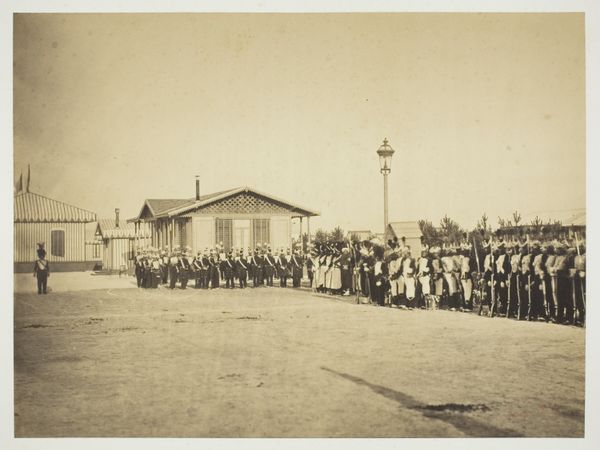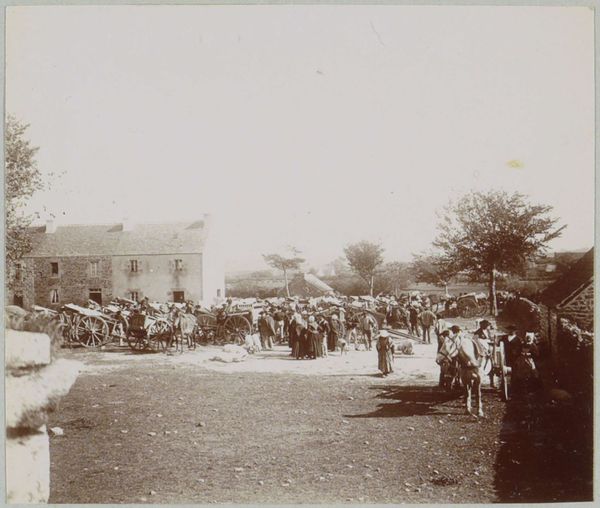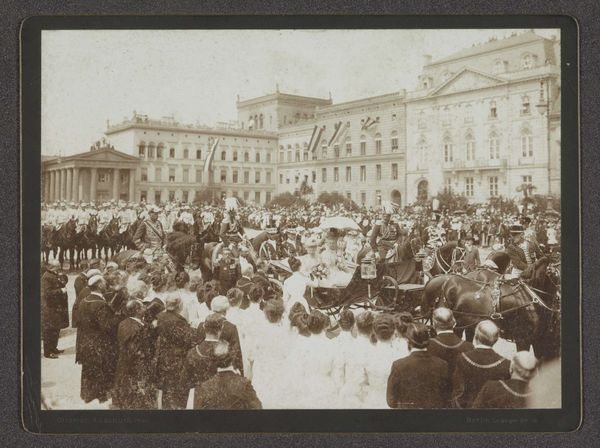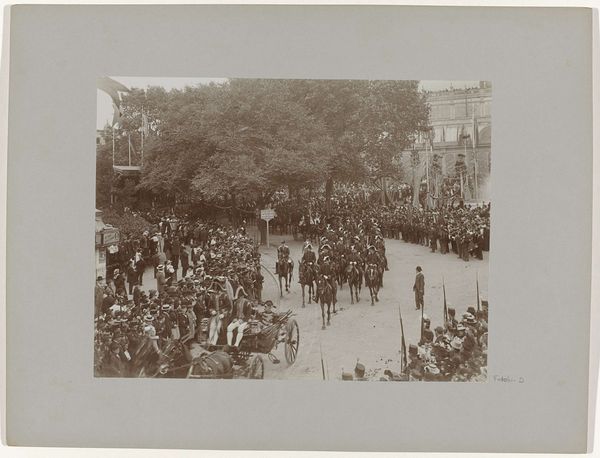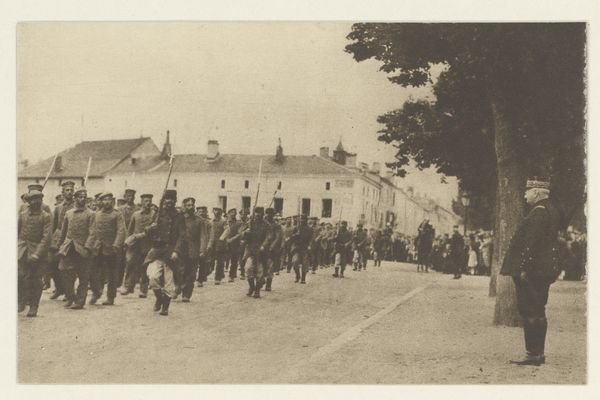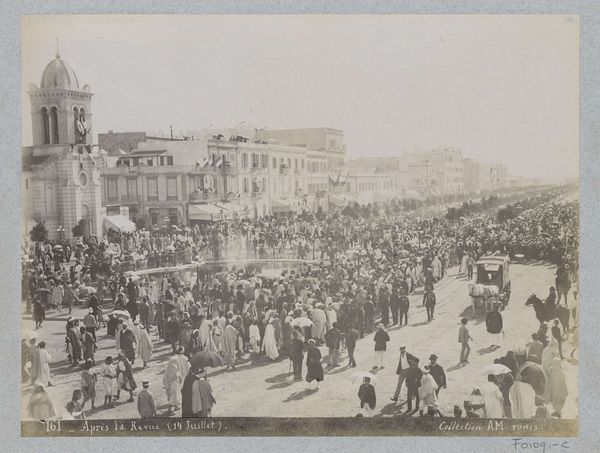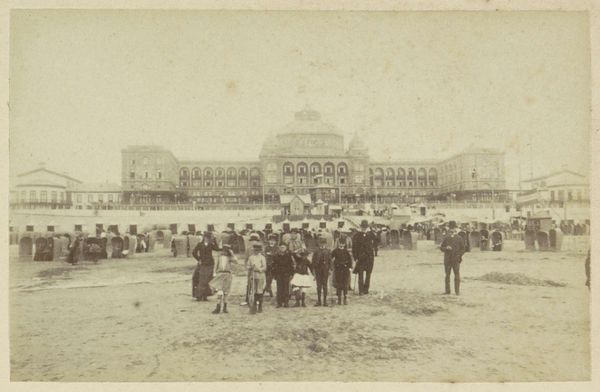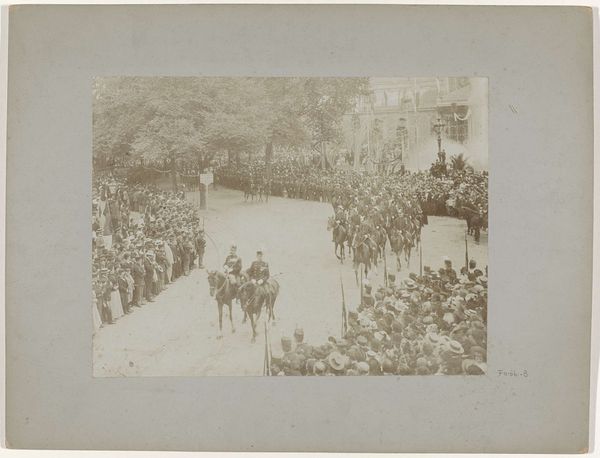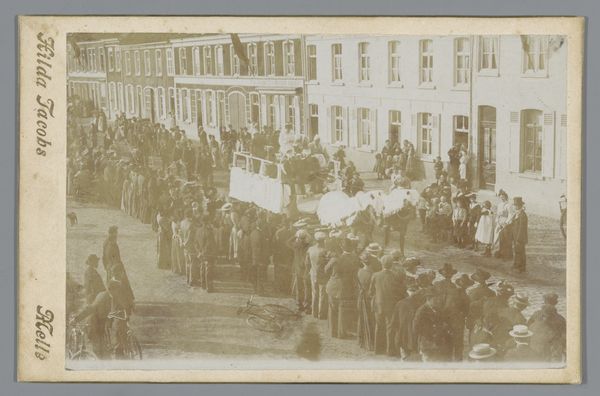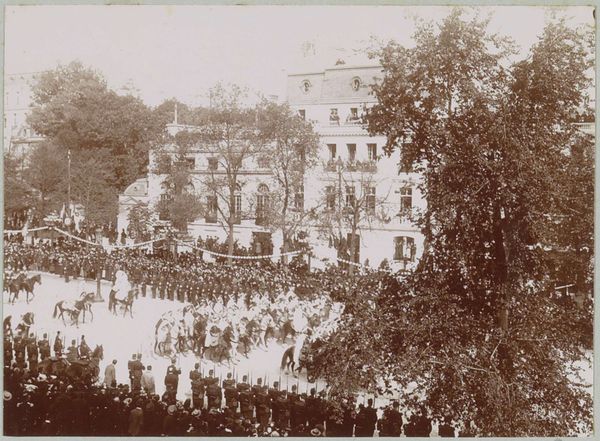
Vertrek van de stoet vanaf het station in Amsterdam tijdens de April feesten 1887
0:00
0:00
albertgreiner
Rijksmuseum
photography, albumen-print
#
impressionism
#
landscape
#
photography
#
cityscape
#
genre-painting
#
albumen-print
Dimensions: height 328 mm, width 294 mm, height 183 mm, width 481 mm
Copyright: Rijks Museum: Open Domain
Curator: As we examine this albumen print, "Departure of the procession from the station in Amsterdam during the April festivities", dated 1887, a cityscape unfurls, capturing the exuberant spirit of the occasion through Albert Greiner's lens. What’s your first impression? Editor: The first thing that strikes me is the density of the crowd. There’s a feeling of anticipation, a collective gaze directed towards something just out of frame. It gives an impression of communal identity expressed in this festive imagery. Curator: Indeed. Genre-painting and Impressionism are intertwined in this photographic creation, depicting a seemingly ordinary moment charged with collective effervescence. Let's consider the April festivities. These events, often tied to monarchy or national pride, serve as crucial focal points for constructing national identity. Editor: Yes, look at the buildings adorned with national colors; they speak of an attempt to harness potent emotions of cultural identity through symbols. The waving flags, too, function as rallying points. Photography freezes and memorializes what was fleeting yet deliberately orchestrated, encapsulating public emotion and political spectacle. Curator: Note the choice of perspective, slightly elevated, offering a sweeping view of the gathering. It reinforces a sense of order, where social structures can visually be confirmed. The horse-drawn carriages indicate status while the crowds represent a collective entity bound by allegiance or perhaps fascination. Editor: Exactly. These images are not just a depiction of people; it's also about capturing collective psychology and state propaganda through visual presentation of public consent. What about the effect and function of the album's content, as we are dealing with a collection of photographs in this case. How might this effect, public access, viewing context impact on the status of the imagery? Curator: Excellent question. Context fundamentally changes how audiences perceive its intentions; we go beyond simple representational intent of documenting some spectacle in late 19th-century Amsterdam into an invitation to engage directly within constructions designed by ruling powers via media forms meant for distribution among both national viewers near at home, overseas populations if viewed abroad too etc. Editor: That resonates. Analyzing such images provides ways that emotional allegiance towards rulers develops beyond simple rational thought because cultural forms are involved in cultivating allegiance from populations near far—something clearly displayed within photography, that had recently matured at time thanks due recent strides, by mid/late decades later onwards until current uses now available, everywhere presently via countless formats! Curator: An essential thought indeed. Greiner gives visual insights into societal and political narratives woven at this era, shaping perception with powerful yet discreet cues. Editor: This image becomes like a small visual study itself. A fascinating intersection of medium, event, power, cultural feeling expressed en masse really worth close analysis through cultural eyes as well!
Comments
No comments
Be the first to comment and join the conversation on the ultimate creative platform.
